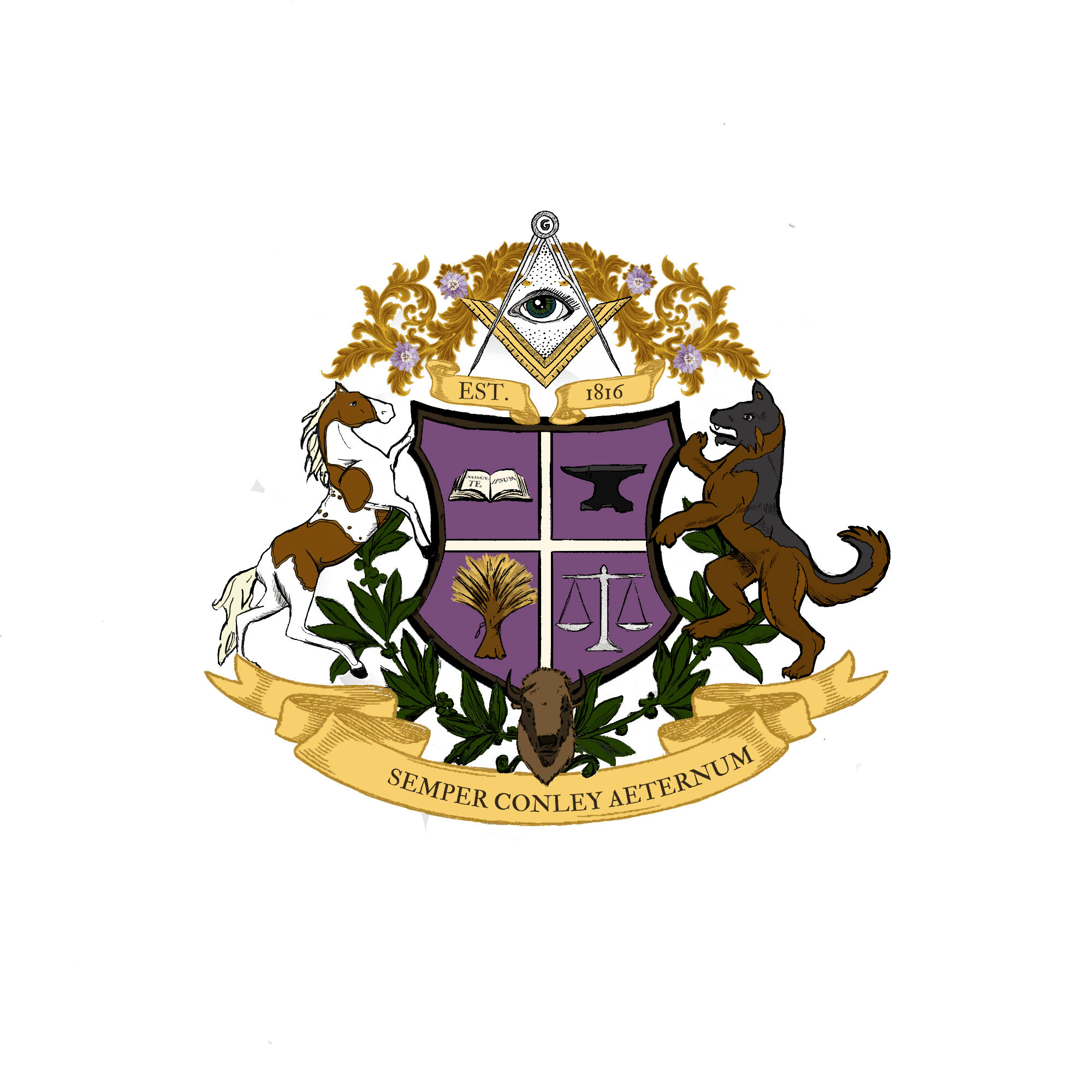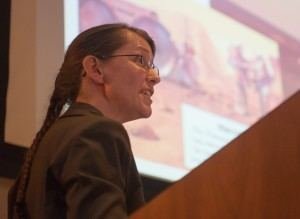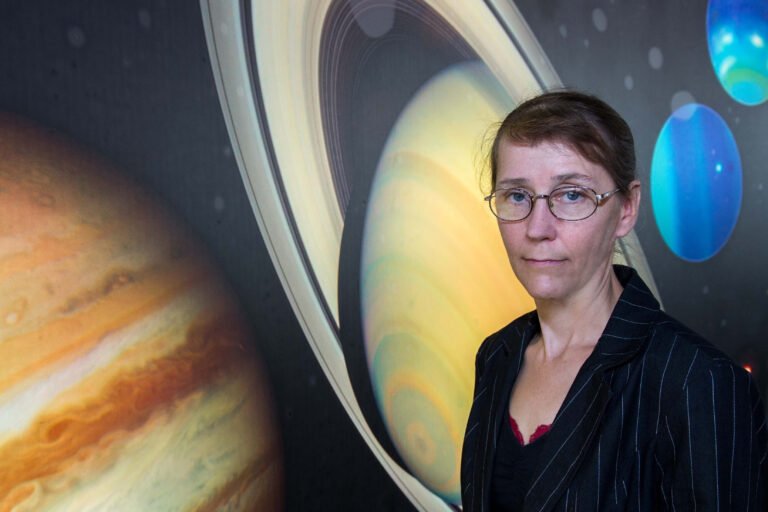CATHARINE CONLEY, PHD
ASTROBIOLOGIST
Catharine Conley an iconic figure of the Conley Family’s 67-year legacy in space exploration. Her work has contributed greatly to the body of knowledge related to function of non-human organisms such as plants in space, and the safeguard of Earth from non-native organisms originating from other celestial bodies in the galaxy.
The Conley legacy in space exploration began with the construction of the NASA Marshall Space Flight Center in Huntsville Alabama from 1958 to through its opening in 1960. Catharine is the apex of the Conley legacy in the space-ecosystem with her service to NASA (National Aeronautics and Space Administration).
Catharine Anastasia Conley was NASA's 6th Planetary Protection Officer from 2006 through 2018.
Catharine Conley spent her early childhood on the campus of the University of Wisconsin at Madison, one the most prestigious math environments in America.
EARLY YEARS. 1966-1970
Catharine Anastasia Conley was born in 1966 to Charles Cameron and Catharine 'Kit’ Smith. Her mother was a geneticist who met her father through scientific circles. Her father, Charles Conley was doctoral student in Mathematics at the world famous Courant Institute when she was born. Her early start in math and science largely the result of growing up in a scientific home.
When Catharine was born, her father’s career as a mathematician was just about to accelerate. He had just laid the foundation for his Conley Index Theory as a means for understanding topological information about complex systems. His eventual success at both University of Wisconsin, M.I.T., and as a mission critical NASA consultant, provided Catharine with childhood surrounded by some of the most brilliant minds in the world during the 1960s and 1970s.
Catharine was born during her father’s postdoctoral studies at NYU’s famed Institute of Mathematics, Courant.
NYU Courant today.
1970-1980 - THE WONDER YEARS
Catharine Conley spent her childhood and adolescence on and around the MIT campus.
Catharine enjoyed a rarified youth, immersed in genius. Her father’s transfer to M.I.T. and his perch as a full professor, resulted in an adolescence within the academic community of Cambridge-Boston-Somerville.
Naturally, the environment inspired her.
1984-1994 THE EMERGENCE
Catharine followed her father’s footsteps at M.I.T., enrolling as a freshman in September of 1984. Her concentration was in Biology and the Life Sciences, and also the Humanities. Her focus was on Plant Biology, while simultaneously studying Russian and French. She translated both the great works of those cultures, as well as everyday language. Thus, she graduated with two bachelor’s degrees earned in 4 years.
She told M.I.T. Alumni Magazine, with reference the unique nature of her training, “Translation is essential when communicating with people from very different backgrounds—politicians, managers, bureaucrats, engineers, scientists—so for being planetary protection officer that was probably my most valuable training.”
After her college years at M.I.T., Catharine matriculated Cornell University as a doctoral student. At Cornell, her dissertation was entitled, “Spatial and temporal localization of the defects associated with petunia cytoplasmic male sterility”. This was beginning of a steady output of scientific publishing which showcased her genius without fanfare.
In quintessentially Conley fashion, she is a polymath with few peers - part scientist and part poet. She communicates the complexities of life science in outer-space with the clarity of a philosopher.
1994-1999 THE SCRIPPS YEARS
The Scripps Research Institute is a nonprofit American medical research facility that focuses on research and education in the biomedical sciences. Headquartered in San Diego, California with a sister facility in Jupiter, Florida, the institute has 250 laboratories employing 2,400 scientists, technicians, graduate students, and administrative and other staff, making it one of the largest private, non-profit biomedical research organizations in the world.
Like her father before her, Catharine was awarded an exceedingly prestige post-doctoral fellowship. She became a fellow at The Scripps Research Institute studying proteins involved in muscle contraction, and continued her scientific publishing. Notably, she published a second dissertation, Molecular and genetic analysis of cross vein patterning in the wing of Drosophila melanogaster in 2000.
Katharine Conley .
1999-2006 START AT NASA
Catharine Conley joined NASA in 1999. She joined the Ames Research Center in California’s Silicon Valley. The Ames Research Center has been closely involved in a number of astronomy and space missions, to which Doctor Conley was a major scientific contributor.
NASA’s Ames Center provides leadership in astrobiology; intelligent/adaptive systems; and planetary science. All of these were central to Conley’s work in the early part of her career at NASA. Her research focused on the evolution of motility, particularly animal muscle.
In 1981 NASA rejuvenated the Space Transportation System (STS) Program, with the first reusable spacecraft and permanent orbiting space station for research. The rekindled STS program became came to be known by it’s popular name, the Space Shuttle Program.
Her experiments using nematode cultures were an important contributor to the Space Shuttle program, which catapulted her research into the spotlight of space science research. The scientific data she collected through her work on the Space Shuttle proved to be of immeasurable value. One of the oldest species on Earth, worm-like organisms, were critical to understanding how human life could be sustained in space.
Catharine Conley’s career at NASA began at the Ames Research Center in in California's Silicon Valley.
Catharine’s research entailed astrology experiments core to the mission of the Space Shuttle Program.
2006-2018 Planetary Protection Officer
Catharine Conley gained prominence in the Space Exploration ecosystem with her appointment to Chief Planetary Protection Officer.
In 2006, Catharine Conley was appointed NASA’s Planetary Protection Officer. In that role, Conley led the effort to protect other planets from Earth organisms, and Earth from other planets’ organisms. In that role, she also led U.S. compliance with the Outer Space Treaty, the international agreement that governs space exploration.
“Planetary protection is about trying to prevent Earth organisms from getting to other planets and, more importantly, making sure there’s nothing nasty when you bring material back to Earth,” she said in an interview with M.I.T. alumni magazine.
The risks of importing organism from another planet are very real. A novel virus with infectious characteristics within a human host is not just the stuff of science fiction , it could transform life as we know it. This underscores the importance of doctor Conley’s contributions to NASA.
2018-Present
Carnegie Institution for Science
As of 2018, Doctor Conley returned to research, and she is as busy ever. She was appointed a research Fellow with the Carnegie Institute for Science in Pittsburgh, Pennsylvania. She is a co-collaborator in the groundbreaking 4D Program. “The objective was to explore ways to advance our understanding of Earth’s complex co-evolving geosphere and biosphere through the collection, analysis, and visualization of large and growing data resources” according to the Carnegie Institution.
The Published works of Dr. Catharine Conley :
2007. International Caenorhabditis elegans Experiment: Physiological Study of Nematode Worms in Weightlessness (ICE-First) - Catharine Conley, PhD, Co-Investigator with the Canadian Space Agency.
Summary: ICE-First studied radiobiology (effects of radiation on living organisms), muscle proteins, cells, genomics (study of genes), development, ageing and apoptosis (controlled cell death) of C. elegans in microgravity. C. elegans (nematode worms) are a relatively simple organism that is used as a model for a wide variety of biological processes.
2011. Decreased expression of myogenic transcription factors and myosin heavy chains in Caenorhabditis elegans muscles developed during spaceflight. - Catharine Conley, PhD
2011. International Caenorhabditis elegans Experiment: Physiological Study of Nematode Worms in Weightlessness (ICE-First) - Catharine Conley, PhD
2011. UNC-94 encodes a tropomodulin in Caenorhabditis elegans. - Catharine Conley, PhD
2017. Four Fallacies and an Oversight: Searching for Martian Life.
Summary: While it is anticipated that future human missions to Mars will increase the amount of biological and organic contamination that might be distributed on that planet, robotic missions continue to grow in capability and complexity, requiring precautions to be taken now to protect Mars, and particularly areas of Mars that might be Special Regions. This article examines both the concept of evidence for possible life on Mars and the logic in recommending that spacecraft cleanliness requirements be relaxed to access Special Regions "before it is too late." Doctor Conley’s collaborative work asserts that there are major risks in assuming martian life could be identified by nucleic acid sequence comparison.
2018. iMars Phase 2 : A Draft Architecture and Science Management Plan ffor the Return of Samples from Mars.
Summary: The International Mars Exploration Working Group (IMEWG) was formed in 1993 to provide a forum for the international coordination of Mars exploration. This article includes recommendations for progressing toward campaign implementation, including a proposed sample management plan.
2019. Updating Planetary Protection Considerations and Policies for Mars Sample Return.
Summary: The Treaty on Principles Governing the Activities of States in the Exploration and Use of Outer Space was ratified in 1967. At that time, scientists were concerned about the potential of contaminating the Moon or bringing back a life form of lunar origin when astronauts returned to Earth with samples. The evidence is that the Moon does not contain indigenous life, but other celestial bodies may. The concern shifted to Mars. Mars is of particular concern because of its habitability and plans to carry out a robotic sample return mission and even potentially human crewed missions in the near future. Doctor Conley’s scientific article provides an overview of the policy aspects of planetary protection and sample return, and a potential strategy to ensure prevention contamination if a robotic sample return mission is carried out.
2020. Comparative Transcriptomics Identifies Neuronal and Metabolic Adaptations to Hypergravity and Microgravity in Caenorhabditis elegans. - Catharine Conley, PhD,
Summary: Deep space exploration is firmly within reach, but health decline during extended spaceflight remains a key challenge. In this study, we performed comparative transcriptomic analysis of Caenorhabditis elegans responses to varying degrees of hypergravity. The research team found that progressive hypergravitational load concomitantly increases the extent of differential gene regulation and resulted in subtle changes in ∼1,000 genes.
2020. Comparative Transcriptomics Identifies Altered Neuronal and Metabolic Function as Common Adaptations to Microgravity and Hypergravity in Caenorhabditis elegans. ff


















